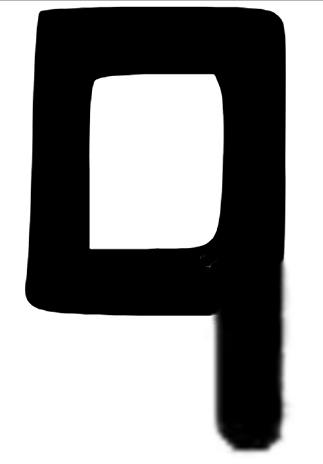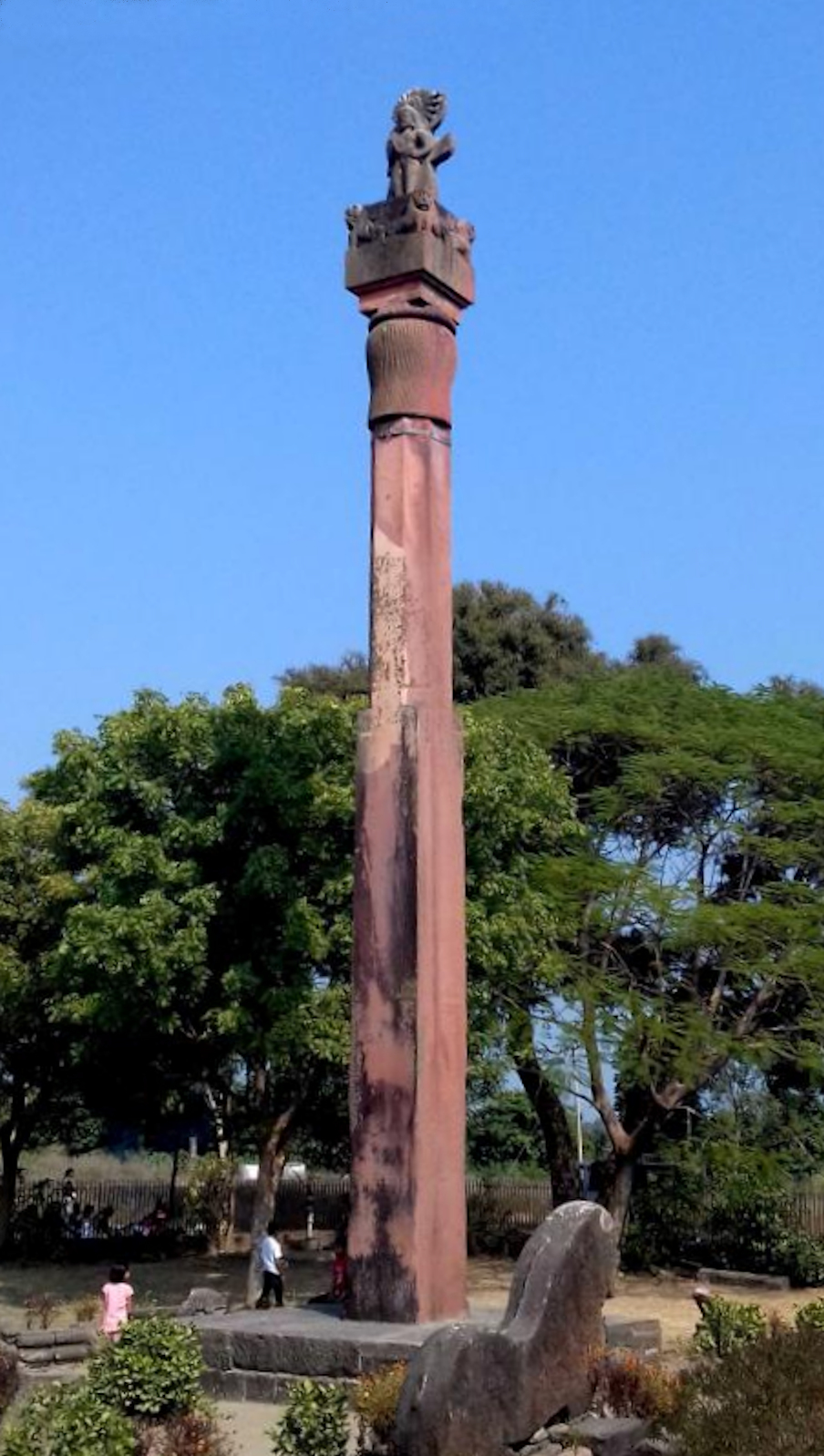Buddhagupta on:
[Wikipedia]
[Google]
[Amazon]
Budhagupta ( Gupta script: 


 ''Bu-dha-gu-pta'', ) was a Gupta emperor and the successor of
''Bu-dha-gu-pta'', ) was a Gupta emperor and the successor of
 The Damodarpur copper-plate inscription informs us that Pundravardhana bhukti (the present-day North Bengal) was ruled by his two viceroys (''Uparika Mahararaja'') Brahmadatta and Jayadatta.
The Eran stone pillar inscription of two brothers, Matrivishnu and Dhanyavishnu mentions Budhagupta as their emperor (''Bhupati''), under whom ''Maharaja'' Surashmichandra was governing the land between the
The Damodarpur copper-plate inscription informs us that Pundravardhana bhukti (the present-day North Bengal) was ruled by his two viceroys (''Uparika Mahararaja'') Brahmadatta and Jayadatta.
The Eran stone pillar inscription of two brothers, Matrivishnu and Dhanyavishnu mentions Budhagupta as their emperor (''Bhupati''), under whom ''Maharaja'' Surashmichandra was governing the land between the
File:Buddha statue inscribed reign of Budhagupta year 157 (476 CE) Sarnath Museum.jpg, Buddha statue inscribed "Gift of Abhayamitra in 157 in the reign of Buddhagupta" (476 CE) Sarnath Museum.
File:Buddha inscription of Budhagupta in the Gupta Era year 157.jpg, Buddha inscription of Budhagupta in the Gupta Era year 157, with extrapolation and English translation.
File:Buddha statue with inscription of Budhagupta in the Gupta Era year 157 (second statue).jpg, Buddha statue with inscription of Budhagupta in the Gupta Era year 157 (second statue).
File:Buddhist devotee on a statue of Buddha standing inscribed Gift of Abhayamitra in 157 GE (477 CE) in reign of Buddhagupta.jpg, Buddhist devotee on the second statue of the standing Buddha (fragment), inscribed "Gift of Abhayamitra in 157 in the reign of Buddhagupta" (477 CE).
File:Inscribed Pedestal of Buddha Image Installed in the Reign of Budha Gupta - Circa 480 CE - Govind Nagar - ACCN 82-240 - Government Museum - Mathura 2013-02-23 5537.JPG, Inscribed pedestal of Buddha installed "in the reign of Budhagupta in year 161" (circa 480 CE). Govind Nagar. Mathura.Description and translation of the inscription in:
File:Eran Budhagupta inscription.jpg, Budhagupta pillar inscription at
Eran Stone Pillar Inscription of Matrivishnu and Dhanyavishnu
{{s-end 5th-century Indian monarchs 490s deaths Gupta Empire Year of birth unknown


 ''Bu-dha-gu-pta'', ) was a Gupta emperor and the successor of
''Bu-dha-gu-pta'', ) was a Gupta emperor and the successor of Kumaragupta II
Kumaragupta II (Gupta script: ''Ku-ma-ra-gu-pta'') Kramaditya was an emperor of the Gupta Empire. An image of Gautama Buddha at Sarnath notes that he succeeded Purugupta who was most likely his father. He was succeeded by Budhagupta.
Several sta ...
. He was the son of Purugupta
Purugupta (Gupta script: ''Pu-ra-gu-pta'', sa, पुरुगुप्त) (reigned 467–473 CE) was an emperor of the Gupta dynasty in northern India. Purugupta was a son of the Gupta emperor Kumaragupta I by his queen ''Anantadevi''. He suc ...
and was succeeded by Narasimhagupta
Narasimhagupta (Gupta script: ''Na-ra-si-ṅha-gu-pta'') Baladitya was an emperor of the Gupta Empire of North India. He was son of Purugupta and probably the successor of Budhagupta.
Defeat of the Hunas
According to the Chinese monk Xuanza ...
.Raychaudhuri, H.C. (1972). ''Political History of Ancient India'', Calcutta: University of Calcutta, p. 522
Rule
Budhagupta had close ties with the rulers ofKannauj
Kannauj ( Hindustani pronunciation: ənːɔːd͡ʒ is a city, administrative headquarters and a municipal board or Nagar Palika Parishad in Kannauj district in the Indian state of Uttar Pradesh. The city's name is a corrupted form of the class ...
and together they sought to run the Alchon Huns
The Alchon Huns, ( Bactrian: αλχον(ν)ο ''Alchon(n)o'') also known as the Alchono, Alxon, Alkhon, Alkhan, Alakhana and Walxon, were a nomadic people who established states in Central Asia and South Asia during the 4th and 6th centuries C ...
(Hunas
Hunas or Huna (Middle Brahmi script: ''Hūṇā'') was the name given by the ancient Indians to a group of Central Asian tribes who, via the Khyber Pass, entered the Indian subcontinent at the end of the 5th or early 6th century. The Huna Kin ...
) out of the fertile plains of Northern India.
Northern India, and in particular the area of Eran
Eran is an ancient town and archaeological site in the Sagar district of Madhya Pradesh, India. It was one of the ancient mints for Indian dynasties as evidenced by the diverse coins excavated here. The site has 5th and 6th-century Gupta era ...
, was next invaded by the Alchon Huns
The Alchon Huns, ( Bactrian: αλχον(ν)ο ''Alchon(n)o'') also known as the Alchono, Alxon, Alkhon, Alkhan, Alakhana and Walxon, were a nomadic people who established states in Central Asia and South Asia during the 4th and 6th centuries C ...
ruler Toramana
Toramana also called Toramana Shahi Jauvla (Gupta script: ''Toramāṇa'', ruled circa 493-515 CE) was a king of the Alchon Huns who ruled in northern India in the late 5th and the early 6th century CE. Toramana consolidated the Hephthalite po ...
, who set up his own inscription there, the Eran boar inscription of Toramana
The Eran boar inscription of Toramana, is a stone inscription found in Eran in the Malwa region of Madhya Pradesh, India. It is 8 lines of Sanskrit, the first three of which are in meter and the rest in prose, written in a North Indian script. It i ...
, circa 510-513 CE.
Inscriptions
 The Damodarpur copper-plate inscription informs us that Pundravardhana bhukti (the present-day North Bengal) was ruled by his two viceroys (''Uparika Mahararaja'') Brahmadatta and Jayadatta.
The Eran stone pillar inscription of two brothers, Matrivishnu and Dhanyavishnu mentions Budhagupta as their emperor (''Bhupati''), under whom ''Maharaja'' Surashmichandra was governing the land between the
The Damodarpur copper-plate inscription informs us that Pundravardhana bhukti (the present-day North Bengal) was ruled by his two viceroys (''Uparika Mahararaja'') Brahmadatta and Jayadatta.
The Eran stone pillar inscription of two brothers, Matrivishnu and Dhanyavishnu mentions Budhagupta as their emperor (''Bhupati''), under whom ''Maharaja'' Surashmichandra was governing the land between the Yamuna
The Yamuna ( Hindustani: ), also spelt Jumna, is the second-largest tributary river of the Ganges by discharge and the longest tributary in India. Originating from the Yamunotri Glacier at a height of about on the southwestern slopes of B ...
and the Narmada The Budhagupta inscription on the Eran column is on the west face towards the bottom of the lower and square part of a large monolithic red-sandstone column situated near the ruined group of temples at Eran. The inscription refers to the reign of Budhagupta over the area "between the rivers Kâlindi and Narmadâ", and it is dated 484–485 CE. The object of it is to record the erection of the column, which is called 'dhvajastambha' or flag staff of the god Vishnu. This pillar is about 48 feet high. This inscription was discovered by T.S. Burt in 1838.
A pedestal of a Buddha statue found at Govindnagar near Mathura
Mathura () is a city and the administrative headquarters of Mathura district in the Indian state of Uttar Pradesh. It is located approximately north of Agra, and south-east of Delhi; about from the town of Vrindavan, and from Govardhan. ...
bears an inscription "in the reign of Budhagupta in year 161" (circa 480 CE). This is the only known epigraphic evidence showing that Budhagupta's authority extended to Mathura in the north.:
Two standing Buddha images from Sarnath
Sarnath (Hindustani pronunciation: aːɾnaːtʰ also referred to as Sarangnath, Isipatana, Rishipattana, Migadaya, or Mrigadava) is a place located northeast of Varanasi, near the confluence of the Ganges and the Varuna rivers in Uttar Pr ...
are known, with bear dated inscriptions mentioning the "Gift of Abhayamitra in 157 in reign of Buddhagupta" (157 of the Gupta era
The Gupta era is a historical calendar era that begins from c. 318–319 CE. It was used by the Gupta emperors, as well as their vassals and their successors in present-day northern India and Nepal. It is identical to the Vallabhi era (or Valabh ...
being 477 CE). There are also stone inscriptions in Varanasi
Varanasi (; ; also Banaras or Benares (; ), and Kashi.) is a city on the Ganges river in northern India that has a central place in the traditions of pilgrimage, death, and mourning in the Hindu world.
*
*
*
* The city has a syncretic t ...
and Eran
Eran is an ancient town and archaeological site in the Sagar district of Madhya Pradesh, India. It was one of the ancient mints for Indian dynasties as evidenced by the diverse coins excavated here. The site has 5th and 6th-century Gupta era ...
and a seal from Nalanda mentioning Budhagupta as the ruler, as well as several copperplate inscriptions.
First Buddha statue with inscription of Budhagupta
A statue of the standing Buddha found inSarnath
Sarnath (Hindustani pronunciation: aːɾnaːtʰ also referred to as Sarangnath, Isipatana, Rishipattana, Migadaya, or Mrigadava) is a place located northeast of Varanasi, near the confluence of the Ganges and the Varuna rivers in Uttar Pr ...
has a dated inscription (year 157) in the name of Budhagupta. The content is partially preserved, but essentially identical to an inscription on a second statue, made by the same donor, allowing for reconstruction.
Second Buddha statue with inscription of Budhagupta
A second statue of the standing Buddha found inSarnath
Sarnath (Hindustani pronunciation: aːɾnaːtʰ also referred to as Sarangnath, Isipatana, Rishipattana, Migadaya, or Mrigadava) is a place located northeast of Varanasi, near the confluence of the Ganges and the Varuna rivers in Uttar Pr ...
has a dated inscription (year 157) in the name of Budhagupta. This statue is defaced, but the devotees at the feet of the Buddha are beautifully preserved. The content is partially preserved, but essentially identical to an inscription on the first statue, made by the same donor, allowing for reconstruction.
Sarnath Museum
Sarnath Museum is the oldest site museum of Archaeological Survey of India. It houses the findings and excavations at the archaeological site of Sarnath, by the Archaeological Survey of India. Sarnath is located near Varanasi, in the state of Ut ...
.
File:Buddha inscription of Budhagupta in the Gupta Era year 157 (second statue).jpg, Buddha inscription of Budhagupta in the Gupta Era year 157 (second statue), with extrapolationa and English translation.
Other inscriptions of Budhagupta
Eran
Eran is an ancient town and archaeological site in the Sagar district of Madhya Pradesh, India. It was one of the ancient mints for Indian dynasties as evidenced by the diverse coins excavated here. The site has 5th and 6th-century Gupta era ...
.
File:Budhagupta.jpg, Copper-plate charter of Budhagupta, dated Gupta year 168
File:Malwa. Budhagupta. Circa AD 476-495.jpg, Coin of Buddhagupta in Malwa
Malwa is a historical region of west-central India occupying a plateau of volcanic origin. Geologically, the Malwa Plateau generally refers to the volcanic upland north of the Vindhya Range. Politically and administratively, it is also syn ...
, derived from the style of the Western Satraps
The Western Satraps, or Western Kshatrapas (Brahmi:, ''Mahakṣatrapa'', "Great Satraps") were Indo-Scythian (Saka) rulers of the western and central part of India ( Saurashtra and Malwa: modern Gujarat, Maharashtra, Rajasthan and Madhya Pradesh ...
."Evidence of the conquest of Saurastra during the reign of Chandragupta II is to be seen in his rare silver coins which are more directly imitated from those of the Western Satraps... they retain some traces of the old inscriptions in Greek characters, while on the reverse, they substitute the Gupta type ... for the chaitya
A chaitya, chaitya hall, chaitya-griha, (Sanskrit:''Caitya''; Pāli: ''Cetiya'') refers to a shrine, sanctuary, temple or prayer hall in Indian religions. The term is most common in Buddhism, where it refers to a space with a stupa and a rounded ...
with crescent and star." in Rapson "A catalogue of Indian coins in the British Museum. The Andhras etc.", p.cli
References
External links
Eran Stone Pillar Inscription of Matrivishnu and Dhanyavishnu
{{s-end 5th-century Indian monarchs 490s deaths Gupta Empire Year of birth unknown